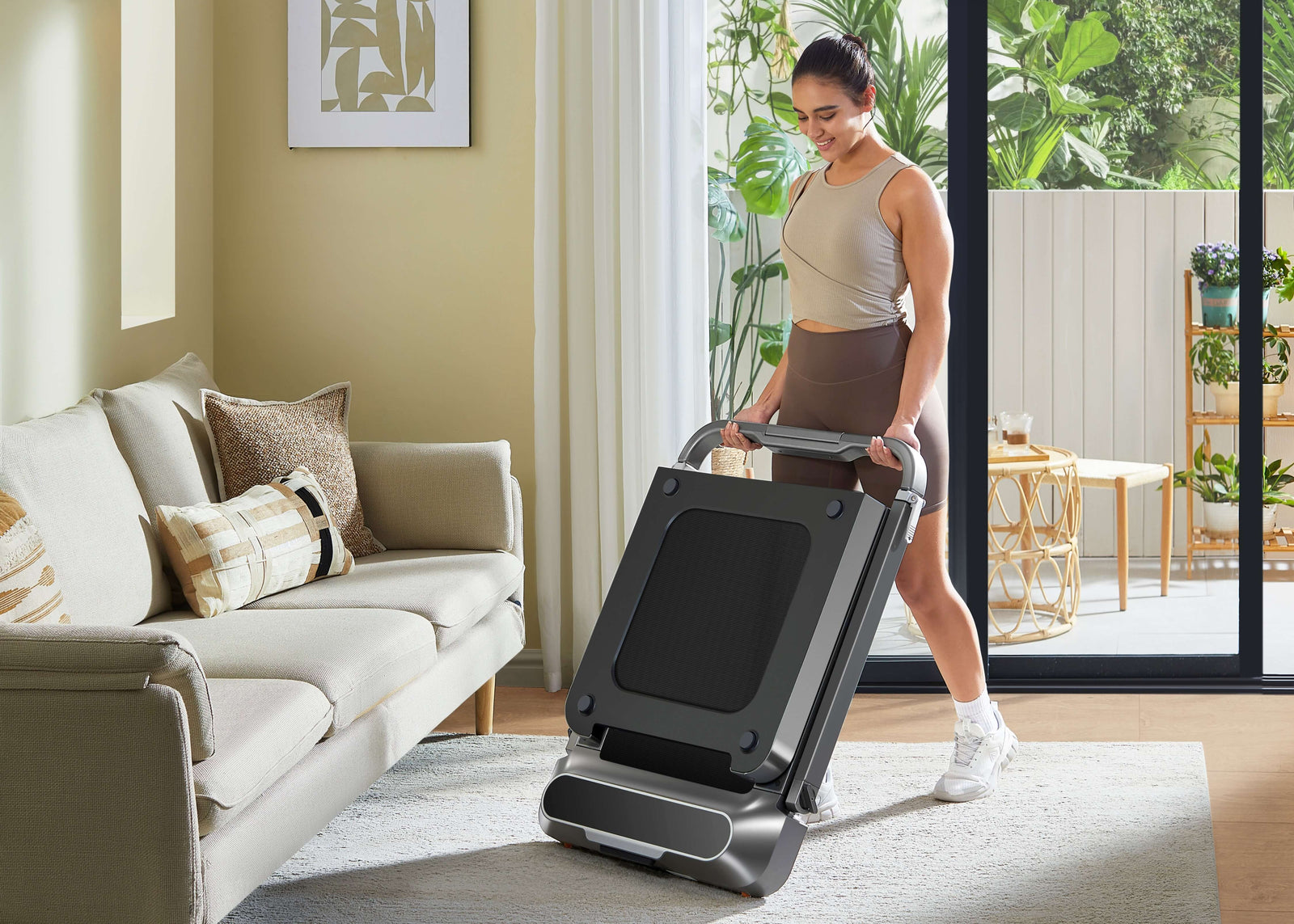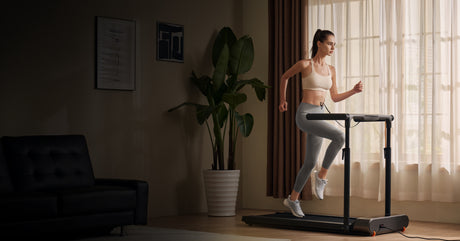Buying a treadmill for your home might sound like a straightforward decision, but in reality, it’s one of those purchases that benefits from careful planning. Beyond simply offering a way to avoid the unpredictable British weather, those grey mornings in Manchester or the sudden downpours in London, it’s about adding a long term fitness tool to your daily life. The convenience of having a treadmill a few steps away is undeniable, but it’s also a sizable investment that deserves thought. Before rushing into a purchase, it’s worth knowing what really matters: from the type of treadmill that fits your goals, to the space you’ll need, to the features that actually justify the price tag.
Understanding Your Fitness Goals
Before diving into catalogs or scrolling through online deals, it’s important to pause and ask yourself what you want your treadmill to do for you. Your personal fitness aims should guide the type of machine you invest in.
If your main goal is to stay active by walking, perhaps while streaming your favorite BBC series or catching up on a podcast, then a simpler model with fewer advanced features could be all you need. On the other hand, if you’re gearing up for the London Marathon or enjoy structured interval training sessions, you’ll need a treadmill that can handle higher speeds, frequent use, and long-distance running. Being clear about your primary purpose helps prevent overspending on bells and whistles you’ll never touch, while also ensuring you don’t end up with a treadmill that falls short of your ambitions.
Don’t Ignore the Space You Have for Your Treadmill
One of the biggest surprises for many first-time treadmill owners in the UK is just how much room the machine actually takes up once it’s delivered. What seems modest on display in a large showroom can suddenly dominate your living room, spare bedroom, or garage.
To avoid disappointment, carefully measure not only the treadmill’s footprint when it’s unfolded but also the space you’ll need around it. Most safety guidelines recommend leaving at least two feet of clearance on either side and five to six feet behind the deck, so you have room to step off safely if you stumble. This can be a challenge in smaller terraced houses or compact flats in cities like Edinburgh, Manchester, or Birmingham, where every square foot counts. If space is limited, consider investing in a foldable treadmill. Many modern designs are slim enough to store upright against a wall or even slide neatly under a bed, making them a practical solution for smaller British homes without sacrificing performance.

Key Features Worth Paying Attention To
Once you’ve worked out your fitness goals and measured your space, the next step is to look closely at the treadmill’s specifications. The right features can make the difference between a machine you’ll actually use for years and one that quickly gathers dust.
Motor (CHP)
The motor is the heart of the treadmill. For runners, a Continuous Horsepower (CHP) rating of at least 2.5 is recommended to keep speed smooth and reliable during longer sessions. If you’re mainly walking or doing light jogging, a 1.5 CHP motor may be sufficient. A stronger motor not only delivers consistent performance but also tends to last longer under frequent use.
Running Deck Size
Deck size is often overlooked, but it makes a big difference in comfort. Serious runners will benefit from a deck length of at least 55 inches (around 140 cm) to support a natural stride, while walkers can get away with something shorter and narrower.
Cushioning System
Unlike pavements or concrete paths, treadmills can offer shock absorption. Good cushioning reduces impact on your knees and ankles, allowing you to train more comfortably and with less risk of injury over time.
Incline and Speed Settings
Most modern treadmills allow for incline training, usually up to 12–15%. This is excellent for adding variety, simulating hill climbs, and burning more calories. Just make sure the maximum speed matches the pace you plan to train at, particularly important for those doing interval runs or marathon prep.
Noise Level
A quiet treadmill matters more than many people think. If you live in a flat with thin walls or plan to run early in the morning, a loud machine could disturb flatmates, neighbors, or your family. Always check reviews for feedback on noise levels before making a purchase.
Budgeting for Your Treadmill Purchase
Treadmills come in a wide price range, and while you don’t necessarily need the most expensive model, it’s best to be cautious of bargain-basement options that often cut corners on quality. Think of the purchase as a long-term investment in your health and consistency.
Entry-level machines under £500 are usually best suited for light walking, while mid-range models between £500 and £1,500 tend to strike the best balance between price, durability, and features for jogging or light running. Serious runners, or households where the treadmill will see heavy use, may want to consider premium machines over £1,500, which offer sturdier construction, more powerful motors, and advanced extras like interactive displays and extensive incline options. Remember to factor in additional costs such as delivery, especially for heavier units, and professional assembly if you’d prefer not to handle it yourself. Many UK retailers also provide financing options, making it easier to access higher-quality models without the pressure of a single large payment.

Understanding Warranty and Customer Support
In the UK, consumer rights offer a good level of protection, but nothing replaces the security of a strong manufacturer’s warranty. With treadmills containing multiple moving parts that inevitably experience wear and tear, repairs can become expensive. A solid warranty ensures you’re not left footing the bill when key components fail, giving you extra confidence in your purchase.
Motor Coverage: Look for a long-term or lifetime warranty on the motor, as it’s the most critical and expensive part of the treadmill.
Frame Guarantee: A quality treadmill should always include a lifetime warranty on the frame.
Parts & Labor: Ensure there’s at least 1-3 years of coverage for parts and labor, which protects against issues with electronics or the running deck.
Customer Service: Prioritize brands with reliable UK-based support teams. Quick, local assistance is far more convenient than relying on international service centers.
Avoiding Common Treadmill Mistakes
Even the best treadmill won’t perform well if it’s used incorrectly. To keep your machine safe, efficient, and long-lasting, steer clear of these common errors:
Ignoring Weight Limits
Every treadmill has a maximum user capacity, and consistently pushing that limit shortens the life of the motor, belt, and deck. Always choose a model that comfortably supports your weight.
Overlooking Assembly Requirements
Some treadmills are heavy, complex machines that require more than one person to assemble correctly. Rushed or incorrect assembly can damage the frame or electronics. If in doubt, consider paying for professional installation.
Skipping Routine Maintenance
Simple tasks like lubricating the running belt, wiping away sweat, and vacuuming dust around the motor make a huge difference. Neglecting these can void your warranty and dramatically reduce your treadmill’s lifespan.
Looking for a Reliable Treadmill Option?
Choosing the right treadmill isn’t just about horsepower or belt size; it’s about finding a machine that genuinely works with your lifestyle and your living space. For many in the UK, where flats and homes can be compact, a bulky treadmill is simply not practical. That’s why WalkingPad has developed a range of sleek, foldable treadmills designed with modern British households in mind.
Our models combine quiet, efficient motors with generously sized decks, giving you a comfortable workout without taking over your living room. When you’re finished, the treadmill folds neatly away under a bed, against a wall, or in a corner, making it perfect for city apartments in London as well as smaller homes across the UK. With WalkingPad, you don’t need to choose between space and performance; you get both.

FAQ
How much space do I really need behind a treadmill?
Safety standards suggest leaving at least five to six feet (around 1.5 to 1.8 meters) of unobstructed space behind your treadmill. This buffer zone is vital if you ever stumble or lose your footing; it ensures you won’t collide with a wall or piece of furniture as the belt moves. It’s one of the most overlooked setup details, but one of the most important for preventing injury.
Are folding treadmills as good as non-folding ones?
Yes, modern folding treadmills have come a long way. Many premium models now feature strong motors, durable decks, and effective cushioning that rival traditional non-folding machines. The main trade-off comes at the budget end of the market, where some folding treadmills sacrifice motor power, belt size, or stability to keep costs and dimensions down. Always review the CHP rating and deck length before buying to ensure it matches your fitness goals.
What is CHP and why is it important?
CHP stands for Continuous Horsepower. It indicates the level of power a treadmill motor can sustain over time without overheating. For walkers, a lower CHP is usually fine, but if you plan on running, especially at higher speeds or longer durations, you’ll want a motor rated at 2.5 CHP or higher. This ensures smooth performance, reduces strain on the machine, and extends its lifespan overall.
How often do I need to lubricate the belt?
It depends on your treadmill model and how often you use it. Most machines require lubrication every 3-6 months, or after about 40 hours of use. Some newer treadmills will even alert you when lubrication is due. Always check your user manual for the manufacturer’s specific guidance.
Conclusion
Buying a treadmill is more than just picking a piece of kit; it’s setting yourself up for long term success in your fitness journey. In the UK, where homes can range from compact city flats to spacious suburban houses, preparation is everything. Define your fitness goals clearly, measure your available space carefully, and pay attention to essential features like motor strength, running deck size, and cushioning.
By taking the time to compare models, read reviews, and prioritize quality over quick savings, you ensure your investment pays off for years to come. With the right treadmill, you’ll have a reliable, weather proof training partner that keeps you consistent, motivated, and moving closer to your goals.
More Reading: Treadmill vs Walking Pad: Choosing the Right Home Fitness Option






